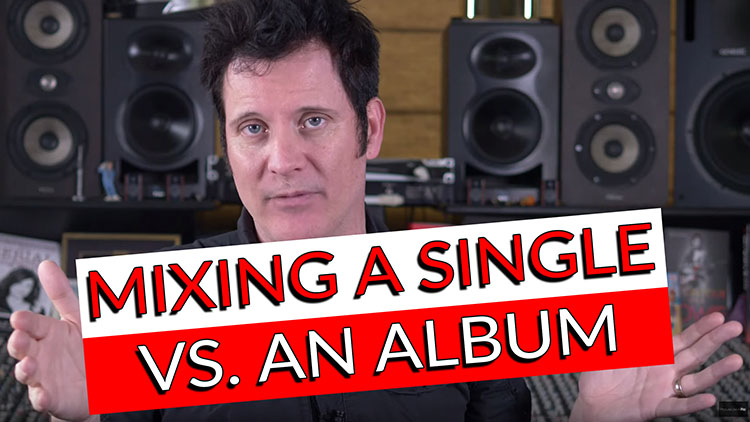Happy Friday! Hope your week has been marvellous, as always we have a bunch of wonderful questions to answer for you today!
So, let’s get into Today’s featured question! “We always mix singles but when we want to make an album how do we make the mixes of all the songs have a unique sound concept? Do we import all the parameters of our first complete mix to the other songs?”
When I’m mixing an album that has a theme, for example a band or an artist went into a studio and tracked all their Drums, Bass, and Guitars with a theme in mind. I would listen to all of the roughs and make a decision based on things like similar drum sounds, the amount of drum mics used recording, which songs have programmed drums, etc.
I might take one song from the first group that sound similar, mix it and get it as great sounding as possible, send it off to the artist for approval, take their notes, maybe 1,2, or 3 recalls to get it slamming and make it sound amazing.
Then move onto the remaining songs with that kind of overall drum sound and take it from there.
I am very conscious and I believe you’re implying that we have to be to ensure we don’t make it sound like a really bad late ’90s thru mid-2000’s rock record. – You all know what I’m talking about!
Kids talked about it all the time they would hear a single on the radio, go buy the album only to find the other nine songs on the album just sounded like clones of the single but not as good.
You remember those days, the same drum sound, samples, and everything on all ten songs. We know how those guys and girls were making records, they would sit the drummer in a room with a click track, and they would play it down, edit it to an inch of its life, throw in all the samples, then it would be three days for bass, guitar, vocals and so on. – All of that would go off to the ProTools editor.
Those rock records of that period sound quite bland and so many fans said that. They said they were forced into buying a single by getting an album. They were forced into a situation of spending $17.99 at Best Buy or wherever it was because they really just wanted that single and then they had to listen to nine other songs which sounded almost identical.
I’ll get off my high horse for a second and say that is obviously what we want to avoid at all costs.
One of the beauties of having your own equipment, a little interface, a $300-$400 Mid-price microphone is you can do things on your own now, you can get creative, do things thinking outside the box and I applaud it and encourage it!
So when it comes to mixing, having systems or a template isn’t a bad thing, but it’s the willingness to break out of that where necessary.
When we’re talking about making albums and mixing albums and there are songs with similar production techniques, Of course, I will take those settings, apply them to the next song and get it up to a level where it sounds amazing pretty quickly. – I’ve acquired knowledge from one song to another to another.
However, I want to be conscious to find what is unique about that song. – If they change the snare I’m not going to put this overriding snare on it so you lose all its personality.
It’s an obvious thing, Remember to listen to the roughs or tracks before you put them through your template or way of working and make sure you don’t lose what is unique about the sound!
Hear the rest of this answer and watch the full episode of FAQ Friday here:
We cover the following questions during this episode of FAQ Friday!
• We always mix singles but when we want to make an album how do we make the mixes of all the songs have a unique sound concept? Do we import all the parameters of our first complete mix to the other songs? (2:06)
• Do stems include all the processing like reverb, delay, compression, etc? (8:24)
• I’ve been noticing problems with my work that I do on headphones but if I were to buy correction software like Sonarworks would that replace or just delay the need for new headphones? (12:35)
• How do you treat backing vocals in a mix? (18:50)
